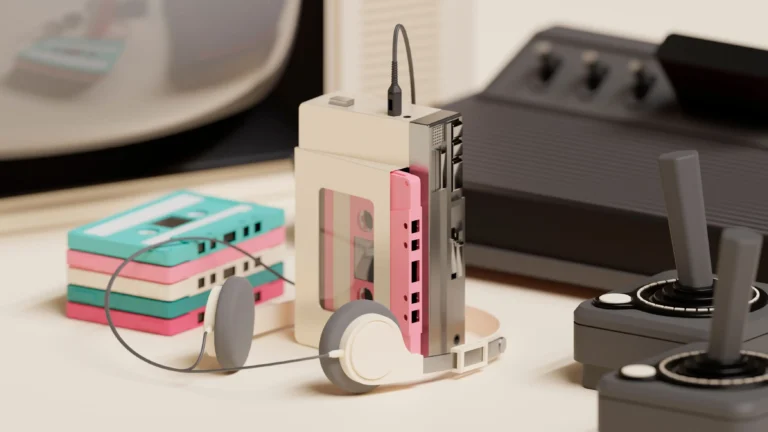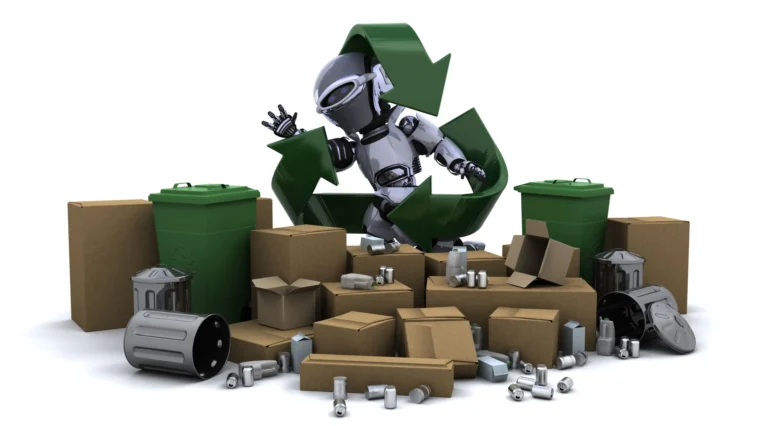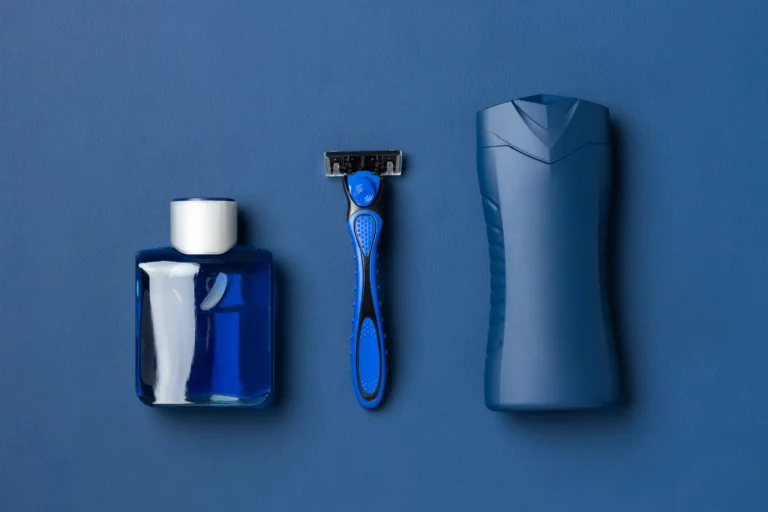Introduction
Fluorescent lighting is widely used in households, cafes, retail spaces, and many other places for its energy efficiency, bright light, and longevity. But they contain mercury — a potent toxin that doesn’t just disappear when these lights burn out. Improper disposal of these tubes can lead to mercury release, which in turn contaminates our ecosystems. As mercury vapor is invisible and odorless, you wouldn’t even notice its presence, making it a silent threat to your health and the environment. That’s why it’s essential to recycle fluorescent tubes or dispose of them in the right manner.
This responsible approach ensures that the poisonous waste is handled correctly, mitigating mercury pollution risks. Let’s learn in detail how to recycle fluorescent tubes properly, what to do in case of accidental breakage, and explore if there are any better alternatives to fluorescent lighting.
Understanding Fluorescent Tubes
Illuminating the Basics
A fluorescent tube is a glass tube coated inside with phosphor and filled with mercury vapor. When electricity passes through the tube, it excites the mercury, emitting ultraviolet light. This UV light is transformed into visible light when it strikes the phosphor coating. The result? A bright, glowing tube that lights up your space efficiently. Despite containing mercury, fluorescent lighting is considered safer and more efficient compared to other forms of mercury-based lighting. For example, metal-halide lamps are an advanced, energy-efficient type of low-mercury lamp.
Now, fluorescent tubes come in a wide array of shapes and sizes, from the typical straight rods to compact fluorescent lamps (CFLs) in circular or U-shaped configurations. This versatility allows them to be used in diverse settings with different lighting needs and fixtures. Additionally, fluorescent lights have a longer lifespan, and entail lower maintenance costs than traditional incandescent bulbs.
From Warm Whites to Cool Blues
Fluorescent tubes can give off light in colors ranging from warm whites to cool hues, depending on their color temperature. This temperature is measured in Kelvin. Warm white tubes, around 3000 Kelvin, create a yellowish glow perfect for cozy settings like restaurants, lounges, or living rooms. In contrast, neutral white tubes with around 4500 Kelvin provide clear light, which works best for retail spaces and offices. For more clinical or industrial environments, like hospitals or mechanical workshops, cool white lights that mimic daylight (5000K and above) are preferred for their crisp clarity.
Handle with Care
Fluorescent tubes are more delicate than their solid-state siblings, like LED lights. Their glass construction makes them fragile and necessitates careful disposal. If a tube breaks, it’s not just the mess of shattered glass; there’s also the mercury vapor released, which is harmful to both health and the environment as it is a neurotoxin. That’s why it’s crucial to recycle fluorescent tubes properly, preferably at designated facilities that can safely manage the mercury and protect the surrounding ecosystems.
Fragile Yet Hazardous
The fragility of fluorescent tubes goes beyond the risk of breaking glass. The small amount of mercury inside, which is essential for the tube to function, is quite hazardous. If a tube breaks, this mercury can escape and pose serious health risks, affecting our nervous system and kidneys. In another instance, if fluorescent tubes are thrown in trash, they usually break and the mercury that’s released contaminates nearby soil and water bodies, leading to pollution. Mercury vapor also accumulates in the atmosphere and fall as contaminated precipitation into water bodies. As this contaminated water is absorbed by aquatic life, it threatens both wildlife and humans who consume these fish.
All these aspects stress the importance of handling fluorescent tubes with care to make sure they don’t break. They are categorized under the EPA’s Universal Waste Rule, allowing for proper recycling through certified handlers. So the only safe method is to either dispose of them through approved means or to recycle fluorescent tubes.
Fluorescent Tube Recycling: A Step-by-Step Guide
Before the Bin: Preparing for Recycling
- Safe Removal: Carefully switch off the power and gently remove the fluorescent tube from its fixture. Use a stable ladder if necessary and handle the tube by its ends where it is strongest.
- Avoiding Breakage: Carry the tube vertically to minimize stress and potential breakage. Clear the path to your packing area to avoid tripping or any accidents.
- Packing Tips: Wrap the tube in an old newspaper or bubble wrap and secure it with tape. Place the wrapped tubes in a rigid cardboard box with ample padding so that they don’t rattle. Now, the tubes are ready to depart for their end-of-life destination, that is a recycling facility.
In Case of Accidents: Handling Breakages
Accidents happen, and when a fluorescent tube breaks, you need to take immediate action to ensure safety and minimize environmental impact.
Here’s a detailed guide on how to safely manage and clean up after such an accident, inspired by EPA recommendations:
- Start with clearing the room of all persons and pets to prevent exposure to mercury vapors. Move children, pregnant women, and older people to a safe distance.
- Turn off any air conditioning or heating to avoid circulating the mercury vapors. Open windows and doors to allow fresh air to enter the room and dilute the mercury vapors. Leave the room ventilated for 10 minutes before beginning the cleanup.
- Remember, your safety matters the most. So before starting the cleanup process, equip yourself with gloves and a mask to avoid direct contact with mercury and prevent inhalation of these vapors. It’s a good idea to wear goggles to get additional protection from tiny glass shards.
- For gathering broken pieces, use a stiff piece of cardboard to scoop up the larger fragments of the tube. Carefully place all pieces into a zip-top plastic bag or a glass jar with a metal lid.
- To collect fine particles like smaller glass fragments and mercury powders, use sticky tape to pick them up effectively.
- Dampen a paper towel to wipe the area clean and capture any remaining mercury or glass residues. Do not use a vacuum cleaner as it can spread mercury vapor and fine particles throughout the area.
- Now, seal the plastic bag or jar tightly, ensuring all broken pieces and cleanup materials are securely contained. Label the container as hazardous waste.
- Do not dispose of the mercury-containing debris in household trash. That’s the worst thing you can do because when these broken shards end up in landfills, they pollute the environment.
- Take the sealed container/bag to a local hazardous waste disposal facility you know about. Or contact your municipal waste management authority for specific disposal guidelines and locations.
The Recycling Journey: From Collection to Rebirth
- Breaking Down the Process
The journey of recycling fluorescent tubes starts with collecting and transporting them to specialized facilities. There, they undergo a process called lamp recycling, where the tubes are fed into a machine that safely crushes them while capturing the released vapors. Advanced separation technologies then segregate the crushed glass, aluminum end caps, and phosphor powder. This separation is important as each component is recycled differently.
- The Role of Mercury
One of the most critical aspects of fluorescent tube recycling is the handling of mercury. During the recycling process, mercury vapor is carefully extracted from the phosphor powder using specialized equipment. The recovered mercury is then purified and reused in new fluorescent lamps or other devices that require mercury.
- Where to Bring Your Bright Ideas
For those looking to recycle fluorescent tubes, several options are available:
- Community Collection Points: Many regions have local recycling centers or organize hazardous waste collection events where residents can drop off their used fluorescent tubes.
- Retailer Recycling Rigs: Some retailers or home improvement stores provide drop-off programs, allowing customers to bring used fluorescent tubes or CFL bulbs right back to the store. This service makes recycling convenient and encourages consumers to participate in responsible disposal practices.
- Mail-In for the Win: Mail-in recycling programs are an excellent option for people residing in remote areas or businesses with bulk quantities of CFLs. These programs allow you to mail used fluorescent tubes for recycling. You just need to sign up with these agencies, upon which you’ll receive mail-in kits to pack the fluorescent tubes safely and ship them to the designated agency’s location.
- Utility Programs: Many utility companies support fluorescent tube recycling through specific programs. These programs offer pickups or designated drop-off points, integrating tube recycling into broader environmental initiatives.
The Eco-friendly Afterlife of Fluorescent Tubes
- Turning Waste into Worth: When fluorescent tubes are recycled, every component is processed to recover materials that can be reused. The glass, once purified, can be repurposed to create new glass products or even used in glassphalt (a type of asphalt that includes crushed glass). Similarly, aluminum ends are melted down and reused in everything from automotive parts to beverage cans. Even the phosphor powder, which contains mercury residues, is carefully treated to extract the mercury. This mercury is then distilled and reused in new products that require mercury. This closed-loop process is an amazing way of conserving natural resources as it reduces the demand for mining and manufacturing virgin materials.
- The Dangers of the Dump: Improper disposal of fluorescent tubes can have serious environmental and health consequences due to the mercury they contain. When thrown into landfills, these tubes can break, releasing mercury vapor into the air and leaching into the soil, polluting water bodies. This mercury accumulates in the food chain. This process is known as biomagnification, where it endangers fish and, ultimately, the health of humans and other animals that rely on these fish as a food source. So all in all, when we recycle fluorescent tubes, we prevent mercury from entering our ecosystems and prevent environmental pollution.
Legalities and Logistics: Navigating Disposal Regulations
The legal framework for fluorescent tube disposal requires understanding both local and federal guidelines, as all these aspects are essential for environmental safety and compliance. Regulations vary across jurisdictions, with some areas imposing stricter controls than others. For instance, several U.S. states have specific laws mandating the recycling of mercury-containing products like fluorescent tubes. California, Maine, Massachusetts, Minnesota, New Hampshire, Vermont, and Washington have enacted regulations that prohibit the disposal of these items in landfills and require their recycling instead.
As responsible citizens or businesses, it is our duty to follow the specific disposal rules in our area. For detailed information, you can consult your local waste collection agencies or resources like the Earth911 database. Following these guidelines, we can prevent environmental pollution and contribute to sustainable waste management practices.
Embracing a Brighter Future
Unlike fluorescent tubes, LED bulbs have superior energy efficiency and do not contain hazardous materials like mercury, making them a safer, sustainable, and economical choice. LEDs last longer and require fewer replacements, thus reducing waste and ongoing costs.
Additionally, these bulbs are dimmable and can save an average of 30% more energy, with a lifespan of about 50,000 hours. Plus, there is no toxicity risk when these lights get broken because LEDs don’t have mercury. Although they contain some toxic substances like arsenic and lead, these are considerably less harmful than the mercury found in other bulb types. So, switching to LEDs is a great way to minimize the environmental impact of lighting.
Lighting the Path Forward…
Recycling fluorescent tubes has a major role in reducing environmental harm and conserving valuable resources. Proper disposal of these tubes prevents mercury from contaminating ecosystems and promotes the reuse of useful materials. When we choose to recycle, we light the path forward towards a more sustainable planet. This practice not only safeguards our environment but also aligns with greener living standards. We encourage everyone to adopt environmentally responsible lighting choices, such as recyclable and energy-efficient options that guarantee a brighter and cleaner future for all. Let’s commit to these sustainable practices and make a lasting impact.




Be Good Do Good – Fashion, The Right Way
Get the Be Good newsletter straight to your inbox. Learn about the fashion industry’s burning problems and sustainability tips, as well as new sustainable and ethical brands.